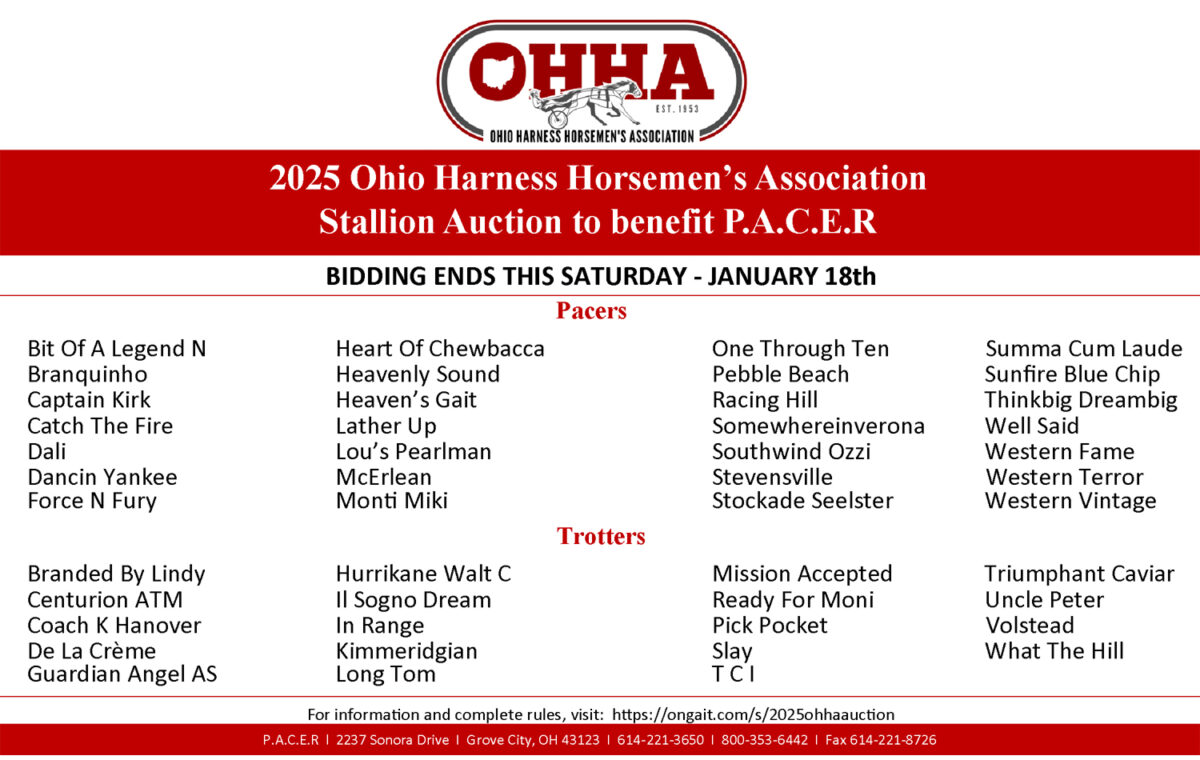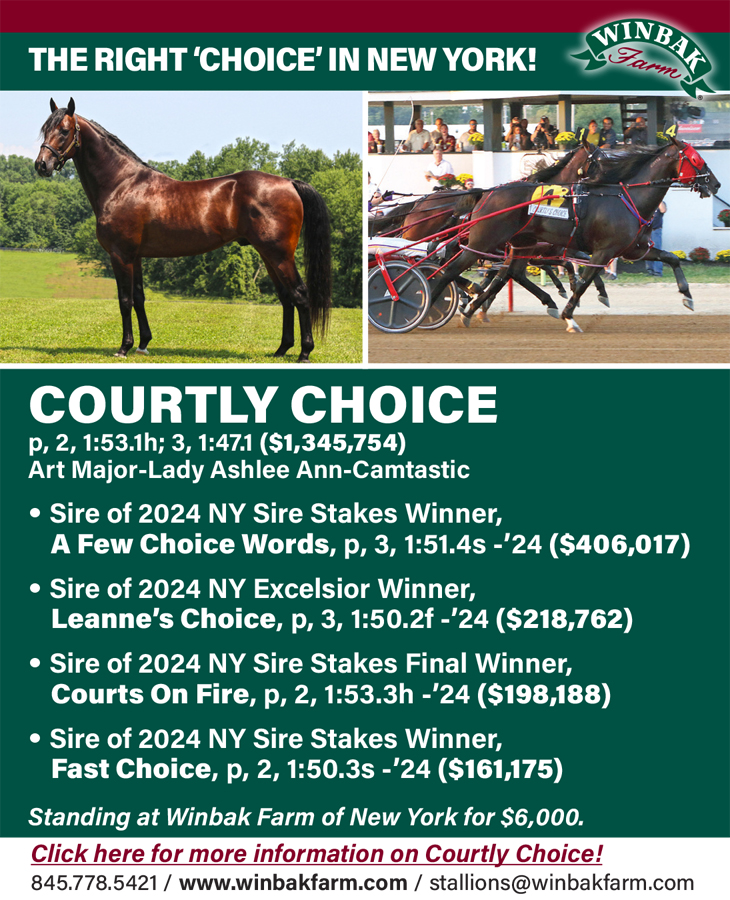
Thoughts on decoupling, Glaucine, Ontario’s funding deal and horse slaughter
by Dave Briggs
Some thoughts on the major issues that have played out in the sport over the last month…
The decoupling story in Florida and West Virginia is worrisome, not the least bit surprising and not the first case of it, or the last.
I contend Ontario started this decoupling movement, just as it started the trend of politicians committing to the sport when they needed it for gaming expansion and then pulling back when it became politically expedient to do so.
There’s so much all of us can and should learn from what happened in Ontario.
The sad reality is politicians will always chase votes and our industry simply doesn’t have enough to move the needle compared with more universal public concerns such as education, property taxes, health care, infrastructure and essential public service.
When Ontario ended the lucrative Slots at Racetracks Program (SARP) in 2013, it was effectively decoupling the slot halls from racing by stripping away the 20 per cent cut of slot revenue horse racing received. Today, most of those slot halls still remain at the track, but the plant owners now receive an undisclosed amount of lease money, instead, that is purportedly much less than the cut once received from slots.
Thankfully, the current provincial government has since committed $700 million over seven years to the industry (more on that in second).
The difference between Ontario and Florida is that the vast majority of Ontario track owners, led by the Woodbine Entertainment Group (WEG) want to have racing — maybe not as much of it as they have now, but they want it. That’s the essential component for racing’s survival.
The worrisome part for the industry is there are too many casino companies owning racetracks. Eventually, the bottom line will win out and horse racing is far too expensive to operate given the current returns.
While it is painful to watch horse racing cut out of the gaming deal, it was inevitable from the beginning. It’s what racing does with the money while it has it that is important. Clearly, standing on its own pari-mutuel feet is the preferred long-term option for the sport, which is why a unified marketing effort with a percentage of horse racing’s cut of gaming money automatically committed each and every year is essential…
Meanwhile in New York, there may or may not be a slew of positive tests coming for Glaucine. That two of the trainers allegedly involved condition horses for Meadowlands owner Jeff Gural has produced cries of hypocrisy in more strident circles over his decision not to immediately ban said trainers from his track. While Gural clearly hasn’t acted consistently on the Glaucine case when compared to how he’s handled those that turned up with positive tests through his own testing protocols via the Hong Kong Jockey Club (HKJC), I think he likely deserves the benefit of the doubt on this one, at least until it gets straightened out and I don’t think he’s being hypocritical.
Here’s why the Glaucine case is a little different to this point:
Despite the trainers allegedly being notified of the positives by the New York Gaming Commission (NYGC), the commission, as of press time, has still not released any information and “won’t confirm or deny” anything has happened. The sheer number of positives has thrown into question whether this was purposeful cheating, some kind of accidental contamination — like Ontario’s Aminorex case years ago — or something else.
In the meantime, Gural said he’s asked to have the samples tested at the HKJC. If that happens and something turns up there or through official channels at the NYGC, I believe Gural will act to ban any trainer implicated.
As always — and this applies to Gural, too — taking a reasonable amount of time to process all the information before acting is a prudent approach, even in our ADD/ADHD world…
There was fantastic news in Ontario this week when the provincial government led by premier Kathleen Wynne announced in its 2016 budget that it was extending both its $100 million-per-year funding to horse racing and the Horse Improvement Program (HIP) that oversees the rich Ontario Sires Stakes (OSS) program through 2021. That additional two years commitment to HIP and the direct funding — which brings the total investment starting in 2015 to seven years and $700 million — is key to the breeding industry, especially, considering the results of mating decisions being made or consummated right now will have at least two racing years of guaranteed purse funding. Prior to that announcement, the previous five-year, $500 million funding package was due to end in April of 2019, the year this results of this year’s matings would be hitting the track at age two…
… And yet, despite that government generosity — wouldn’t Jeff Gural love $100 million a year for horse racing in New Jersey? — some in Ontario still are having trouble getting the equation. There just isn’t enough money to keep all 13 of Ontario’s harness tracks open and healthy with as many dates as they have now.
At a meeting with the leadership of the new Ontario Racing group at The Raceway at The Western Fair District a few weeks ago in London, ON, some of the horsepeople in attendance were advocating just that, despite considerable evidence that those racing at the middle and lower end of Ontario’s three-tiered purse system could not make money.
Everyone is still after a piece of the pie, but something will have to give. For the sport to be sustainable in the province, there will have to be fewer dates at the middle and lower tiers, fewer tracks operating, or both. The government has said repeatedly — and it reiterated the point at Western Fair — that there will be no additional annual funding.
That means tough, big-picture decisions are needed even in Ontario, which is still one of the healthiest harness racing jurisdictions in North America, if not the world….
Finally, an interesting idea borrowed from the thoroughbred industry resurfaced this week on social media when the New York Racing Association’s (NYRA) anti-slaughter policy was referenced. That policy reads as follows:
Any owner or trainer stabled at a NYRA track found to have directly or indirectly sold a horse for slaughter will have his or her stalls permanently revoked from all NYRA tracks. NYRA requires its horsemen to conduct due diligence on those buying horses and encourages them to support rescue and adoption efforts and to find humane ways of dealing with horses unable to continue racing.
The bang-on point was, why hasn’t harness racing adopted something similar? Since most harness tracks no longer have stabling, why not have states revoke or suspend a racing license for anyone found to have sold a horse for slaughter?
It is especially troubling our sport hasn’t followed the runner’s lead on this considering this policy was enacted by former NYRA president and CEO Charles Hayward in December of 2009 — more than six years ago.













